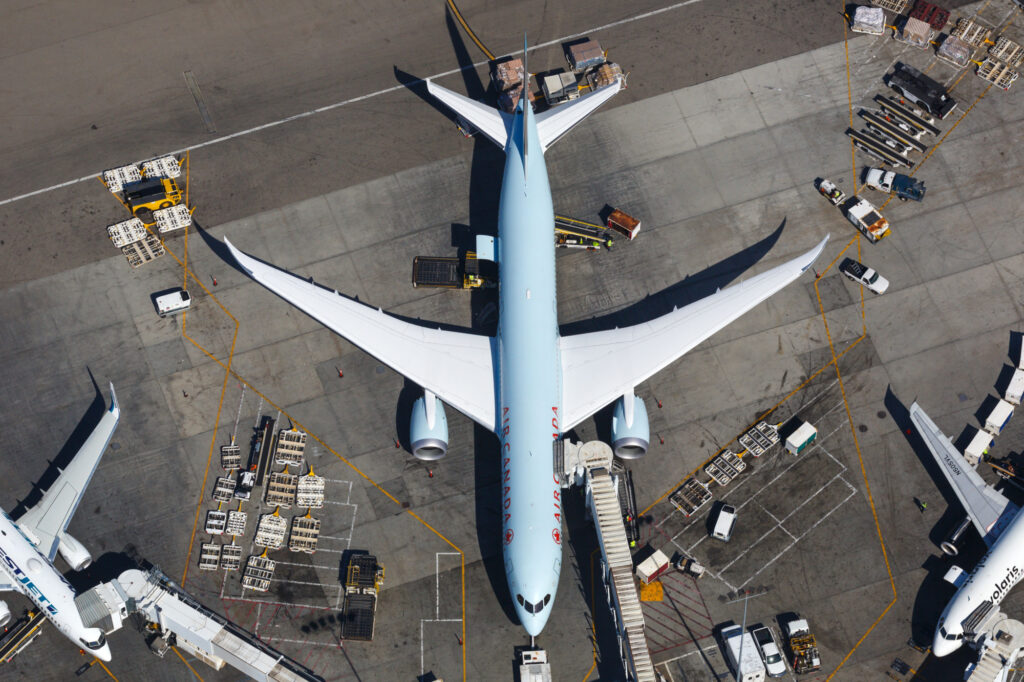The Boeing 787 Dreamliner is an American state-of-the-art aircraft that has revolutionized air travel with its advanced technology, fuel efficiency, and exceptional passenger comfort. It’s a member of the Boeing 787 family, designed to accommodate a larger number of passengers, and offers an extended range compared to its predecessor, the 787-8.
This article will delve into the various features and specifications of the Boeing 787-9 Dreamliner, highlighting its history and technical advancements.
History of the 787 Dreamliner family
The development of the Boeing 787 Dreamliner family began in the early 2000s, in reaction to the changing needs of the aviation industry. Prior to the 787, the Boeing 767 had been the mainstay for medium- to long-haul flights. However, with the increasing demand for more fuel-efficient and technologically advanced aircraft, Boeing recognized the need for a game-changing solution.
Boeing’s engineers and designers embarked on an ambitious project to create an aircraft that would revolutionize air travel. The resulting Boeing 787, also known as the Dreamliner, was first flown on December 15, 2009, and marked a significant departure from traditional aircraft manufacturing techniques.
The 787-9 serves as an updated and improved version of the first Dreamliner 787-8. It retains the core features and technological advancements of its predecessor while offering enhanced capabilities. The stretched fuselage of the 787-9 allows for additional passenger seating and cargo capacity, catering to the evolving demands of airlines operating on long-haul routes.
The first 787-9 flight took place on September 17, 2013.
Updated features and advancements
The Boeing 787-9 Dreamliner incorporates several key updates and improvements compared to the 787-8. The extended fuselage of the 787-9 enables it to accommodate a maximum of 296 passengers in a typical two-class seating configuration, offering airlines increased revenue potential. Furthermore, the aircraft retains the fuel efficiency and advanced aerodynamics of the original Dreamliner, ensuring cost-effective operations and reduced environmental impact.
Additionally, the Boeing 787-9 boasts an increased range capability, allowing airlines to reach more distant destinations via non-stop flights. The maximum range of 7,565 nautical miles (14,010 kilometers) opens new market opportunities and provides greater flexibility for airlines looking to expand their networks.
One of the key design aspects of the Boeing 787-9 Dreamliner is its spacious cabin layout, offering enhanced comfort and an enjoyable journey for passengers. The wider cabin allows for larger windows, giving passengers stunning panoramic views and ample natural light.
Technical specifications
| Specs | Boeing 787-9 Dreamliner |
| Crew Capacity | 2 flight crew |
| Passenger Capacity | Approximately 290-296 (two-class configuration) |
| Length | 206 feet (63 meters) |
| Wingspan | 197 feet (60 meters) |
| Height | 56 feet (17 meters) |
| Maximum Takeoff Weight (MTOW) | 560,000 pounds (254,011 kilograms) |
| Payload | A maximum of 116,000 pounds (52,587 kilograms) |
| Range | A maximum of 7,565 nautical miles (14,010 kilometers) |
| Cruising Speed | Mach 0.85 (approximately 488 knots or 903 kilometers per hour) |
| Engines | General Electric GEnx or Rolls-Royce Trent 1000, each engine can produce between 55,000lb and 74,000lb of thrust |
| Fuel Efficiency | Approximately 20% more fuel-efficient than similar-sized aircraft |
| Materials Used | Carbon fiber reinforced polymer composites, titanium, aluminum alloys |
| Avionics | Honeywell and Rockwell Collins |
Production and price
In 2019, the list price for a 787-9 was $292.5 million.
As of January 2023, the 787-9 variant accounted for 63% of all 787 orders, and a total of 590 deliveries.
As of April 2023, the Boeing 787 program has received a cumulative total of 1,646 orders and successfully delivered 1,054 aircraft. The aircraft family also has an impeccable safety record with zero fatalities and no incidents of hull losses.
Newest variant: Boeing 787-10
In March 2017, the 787-10, the longest variant of the series, was introduced primarily to accommodate a higher passenger capacity. Spanning a length of 224 feet (68 meters), the 787-10 can seat a maximum of 336 passengers in a two-class cabin setup, albeit with a slightly shorter range compared to the 787-9, at 6,330 nautical miles (11,730 kilometers).
In 2019, the list price for a 787-10 was $338.4M.
As of January 2023, there have been a total of 189 orders for the aircraft, with 115 aircraft already delivered.

